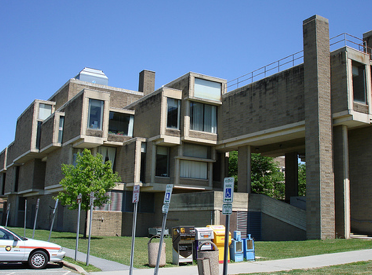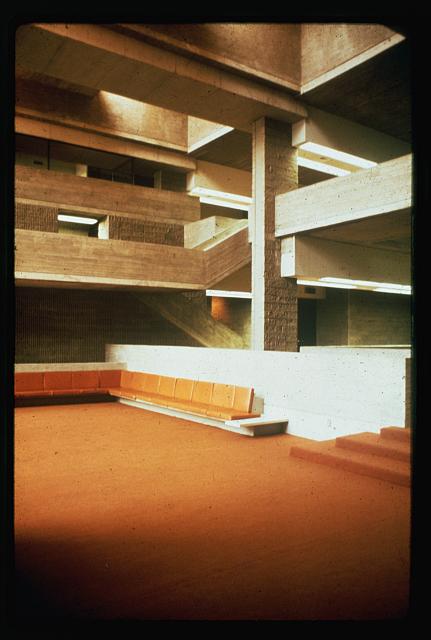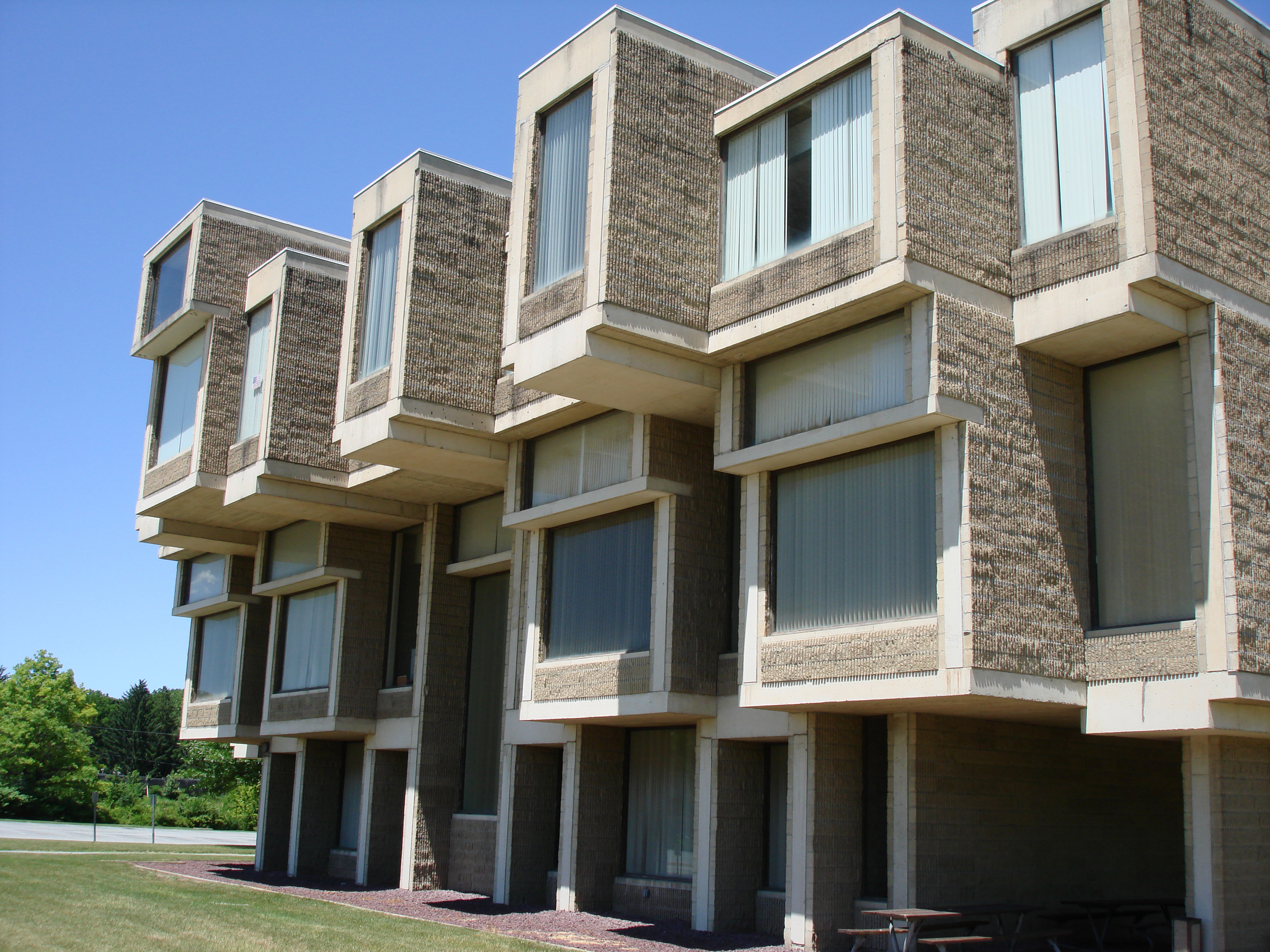To see cultural terrorism at work, you don’t have to trek to Afghanistan, where in 2001 the Taliban dynamited a magnificent and monumental Buddha carved in live rock. Within our own country, the legislators and chief executive in Orange County, New York, a bucolic county a couple of hours west of New York City, seem keen on rivaling the Taliban for barbarism by irreversibly damaging the comparably magnificent and monumental Orange County Government Center, by the American architectural master Paul Rudolph. On February 5, unless a majority of the legislators at a meeting override a veto by the county executive, Steven Neuhaus, the bulldozers will be out by spring to demolish a large section of the building to make room for a soulless replacement. Our collective cultural patrimony will be diminished. Neuhaus claims he is accommodating pressure from the courts to reopen courtrooms in the currently shuttered building. He is also ignoring history and the national interest.
The County, which owns the concrete building — an intricate puzzle of cubic forms wrapped around a courtyard “green” — has refused to allow applications for the state and national Register of Historic Places, though the New York State Historic Preservation Office found it eligible and deserving. Several months ago, the Preservation Office itself refused to permit demolition because federal funds were involved, but the legislators avoided the issue by sidestepping the funds, escaping the stay issued by the Department. The World Monuments Fund put the Government Center on its annual list of Most Endangered Cultural Heritage Sites in 2012, placing the building right up there with Machu Picchu. The building is of national and international significance, one that any other county would treasure.
But locals, or a least some of them, just don’t like it, chief among them, the former County Executive, Edward A. Diana, who for years waged what appeared to be a vendetta against the building. Diana finally closed it after Tropical Storm Irene, citing water damage. At open meetings over the last year, concerned citizens defending the building effectively accused the executive of conducting a campaign of sustained abuse against the building. Armed with photographs showing serious, apparently intentional lapses in routine maintenance, engineers and architects convincingly demonstrated that his administration subjected the building to malign neglect in order to “cry” leaks, flooding and mold, to convince the citizens that the “damaged” building was beyond saving at a feasible price.
The presentations convincingly showed that the administration had conducted a campaign of destructive architectural activism, perhaps a first in the annals of responsible government. Several years ago his administration even proposed a laughable pseudo-Georgian structure to replace the Rudolph structure outright. The administrative bullying was transparent; the chutzpah was breathtaking; the taste level was Neanderthal.
The magnificently tough Rudolph building, however, withstood years of abuse and antagonism, and its strong, abstract forms remain a potent symbol of the idealistic 1960s and ‘70s, when progressive governments hired modern architects to create and wrap public spaces in the dignity of contemporary architectural language. The building is civic in the best Roman traditions, just without the columns. The sheer mass of the concrete structure centers the town of Goshen with the dignified presence of a stone edifice, giving the center, and government, a sense of gravitas. This seat of civic life is virtually the only architecturally significant public building to have been erected in the County in the second half of the 20th century.
This sorry tale needn’t happen. Unlike many historically important but endangered buildings, there is a financially viable alternative now on the table. If the current legislators can’t restore the building sensitively and update the interiors (and perhaps add space to another addition already standing), they could at least accept a no-brainer offer made by the New York architect Gene Kaufman, head of Gwathmey Siegel Kaufman Architects.
In a complicated trade-off of services and construction savings, Kaufman has proposed buying the Rudolph building for $5 million, adapting it into an arts center with studios, live/work spaces and galleries, while designing a bespoke government center nearby on another part of the large site. This is called the “two building solution.” The architect is willing to reduce his fees and cap the costs, guaranteeing a price without overruns. As opposed to the projected cost of the current plan, the County would save about $17 Million with the two building scheme. Moreover, the County would be putting a large building on the tax rolls, while the town and local businesses would benefit from all the “cultural capital” brought to the town by the artists, along with their credit cards. It’s a win-win.
How the county government has allowed itself to think that Rudolph’s building is a liability rather than a major asset is inexplicable. Evidently one shouldn’t underestimate the power of hatred to motivate people, though in this case, the rancor is aimed at a structure considered historic by expert and esteemed institutions, like the State Preservation Office and the World Monuments Fund. Even the architecture critic of the New York Times, Michael Kimmelman, recently weighed in on the issue and concluded that history is on the side of the Rudolph building as tastes shift in its favor.
It doesn’t take much imagination to see the neglected building repurposed and brought back to its original state: the building could again become both the pride of the community, as it once was, and a draw for visitors in a county with few notable monuments. The County can’t really afford to irreversibly compromise this asset with its unwise plan. This is its one and only Picasso, and the legislators should feature rather than mutilate it, otherwise they risk casting themselves as vandals and rubes on the national stage. The value of this building as a local icon, historic artifact, architectural masterpiece and national landmark is inestimable. If the legislators don’t want to steward the architectural history and beauty embodied in this building, at least they should be able to count dollars and act responsibly to a County budget that doesn’t have millions to spare.
How can so much damage be done by so few votes to so many people? This week, without a majority of the legislators to overturn the ill-advised veto, they will be ignoring a win-win alternative in favor of a bad deal that will disserve their citizens, discredit themselves and shame the County they were elected to serve.






